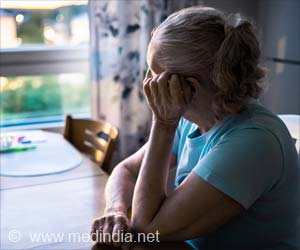Self-injecting devices are becoming more popular in India. When therapies require dosage based on the body weight of where dose titration is required, these devices become useful.
Self-injecting devices are becoming more popular in India. When therapies require dosage based on the body weight of where dose titration is required, these devices become useful.
Self administration is possible not just in diabetes, but even in such diseases such as osteporosis, anaemia, hepatitis, arthritis.Only last month Biocon, based in the southern Indian city of Bangalore, announced the launch of a safety device in form of pre-filled syringes for life saving drugs in nephrology and oncology related diseases.
The two products are filled with the developed Granulocyte-colony stimulating factor (GCSF) and Erythropoietin (EPO), respectively.
These products have been launched in collaboration with Safety Syringes Inc of the US.
ERYPRO Safe and NUFIL Safe would be the first two drugs being marketed using this novel device and other injectible products would follow in the future, company Chairman and Managing Director Kiran Mazumdar Shaw said.
Speaking at a press conference, she said the two pre-filled products would offer a painless and safe for patients suffering from kidney failure and cancer, respectively. This self injecting devices would go a long way to help patients with these chronic diseases not to depend on doctor or para medical staff every day.
Advertisement
Shaw said the country had one lakh chronic kidney failure cases diagnosed so far while those suffering without any diagnosis were many folds more. In case of cancer the country was witnessing three million patients added every year.
Advertisement
These days a common life-cycle management scenario would be for a product to launch in a vial, transition to a pre-filled syringe and then transition to an injection device.
Since the US Needlestick Safety and Prevention Act of 2001, which requires that healthcare professionals take appropriate measures to avoid accidental needlesticks, engineered sharps injury protection (ESIP) systems have been supplied with clinically administered drug products, said Donna French Executive Director, Commercialisation, Amgen, Inc. said.
Since the Act, needlestick prevention devices have been commercially marketed, with over a dozen pharmaceutical products in the oncology hepatitis, RA, antithrombolytic therapy and haemolytic disease markets.
These systems were initially launched in the US, but are becoming increasing prevalent in Europe and Canada. They provide a mechanism to shield the needle after injection and prevent accidental injury. Manual systems, in which the healthcare provider manually places the protective guard over the needle, are becoming obsolete technologies with the introduction of passive systems.
Injectables currently account for an estimated 15% of the global drug delivery market, with the largest individual market being the US.
The market itself is led by the strong growth of biotechnology drugs requiring novel delivery technologies,including implantable, sustained-release and targeted-injection drug delivery systems.
Implantable drugs have been successfully utilised in administering anti-cancer drugs and in delivering high drug doses in traditionally inaccessible areas, such as the central nerve system, bone tissue and past the blood–retinal barrier.
The needle-free sector is also experiencing robust growth, with revenues expected to reach US$3 billion by 2010, Donna French had said last year.
The use of these devices requires training so that the patient can use it effectively without any difficulty in handling. The doctor recommends the use of this self-administration device depending upon the individual requirement. The prescription varies as per the body weight and specific need of each patient. The benchmark for this self-injecting device is correct and precise dosage, ease of use, convenience to carry.
These devices are getting increasingly popular in India too, it is felt. And they make a big contribution to ensuring therapeutic success whilst at the same time improving the patient's quality of life. Injection pens are simple to use, less painful and psychologically better accepted than traditional syringes. Straightforward, user-friendly appliances facilitate correct handling by patients, which in turn results in higher success rates.
Source-Medindia
GPL/L






